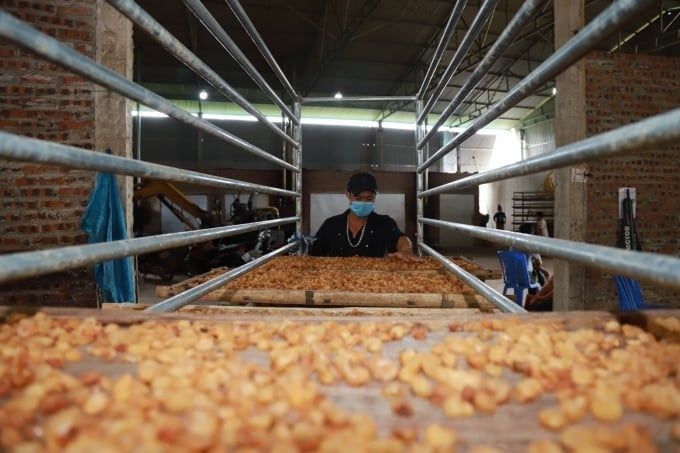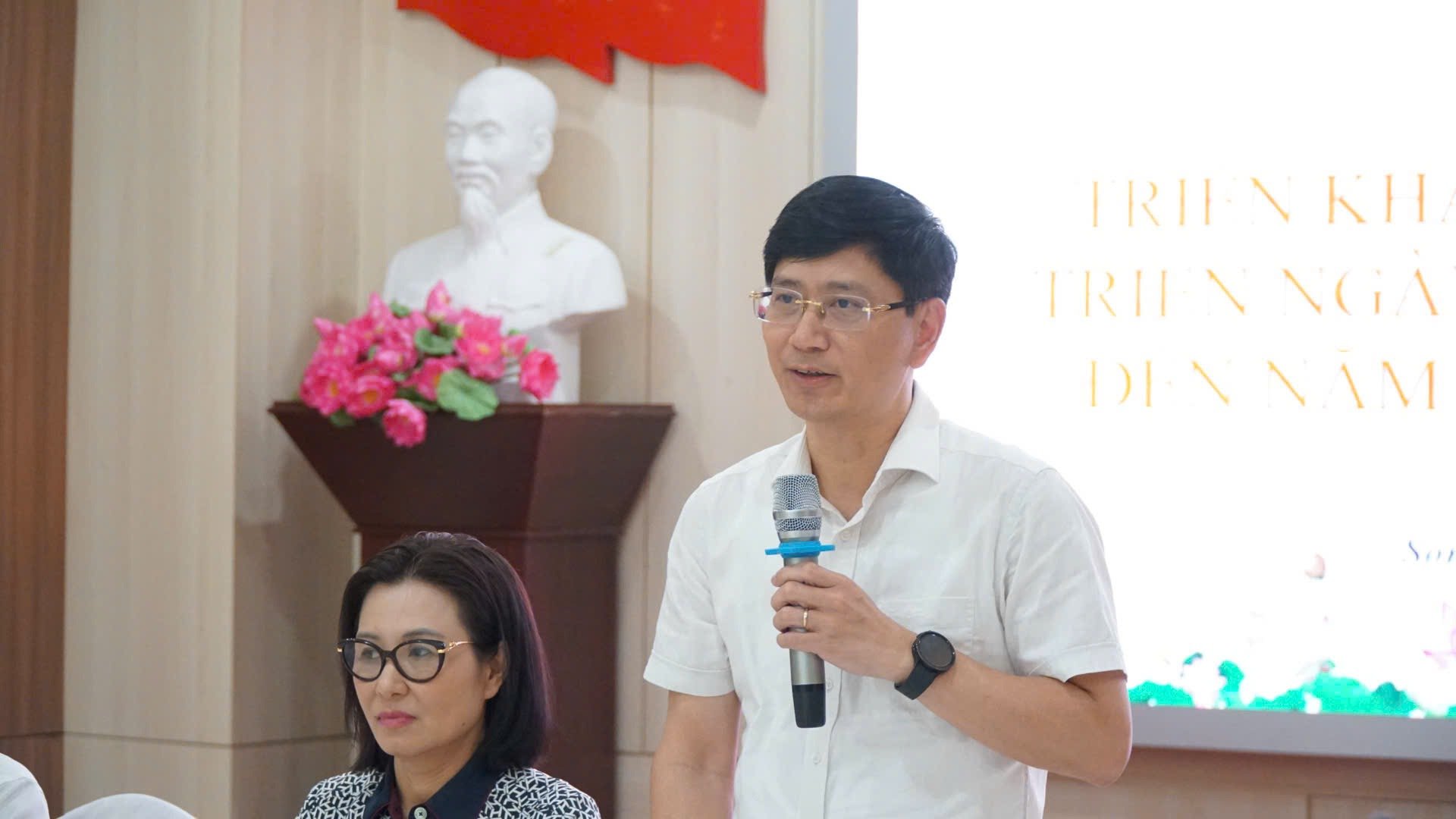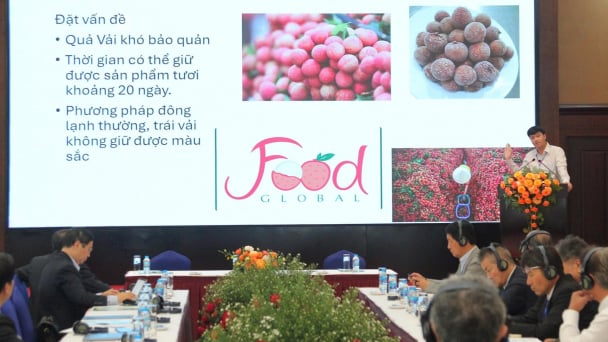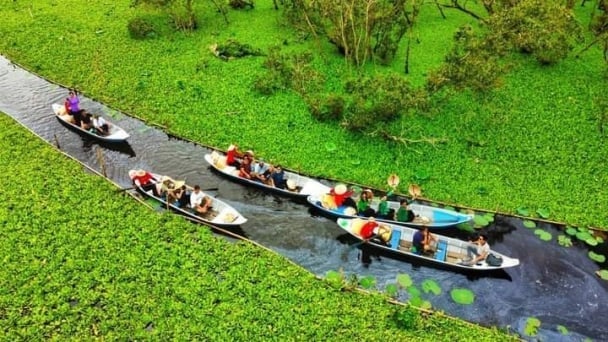June 17, 2025 | 12:25 GMT +7
June 17, 2025 | 12:25 GMT +7
Hotline: 0913.378.918
June 17, 2025 | 12:25 GMT +7
Hotline: 0913.378.918

Conference overview. Photo: Duc Binh.
On the morning of May 13, the The School of Management for Agriculture and Rural Development, in collaboration with the Department of Cooperatives and Rural Development and the Department of Agriculture and Environment of Son La Province, organized a conference to implement the "Strategy for the development of rural occupations to 2030, with a vision to 2045."
The conference aimed to introduce thematic discussions on the development of rural craft villages, with a focus on eco-agriculture models combined with tourism. This was seen as an opportunity to preserve and promote traditional craft villages, create jobs, improve rural livelihoods, accelerate rural modernization, and construct new-style rural areas.
Rural areas must continue to function as open spaces that connect with nature, heritage, and traditional customs. They should maintain strong ties with family-based and village-based communities.
Visitors can enjoy a wide range of experiences, including: agricultural culture, local specialties trade, handicrafts, participation in preliminary processing and food production, cooking classes and local cuisine tastings, exploration of daily rural life, festivals and religious rituals, folk tales, music, countryside fashion, and traditional sports activities.

Ms. Tran Thi Loan shares upcoming plans for craft village development. Photo: Duc Binh.
Ms. Tran Thi Loan, Head of the Rural Occupations Division under the Department of Cooperatives and Rural Development, Ministry of Agriculture and Environment, stated that the strategy focuses on two major objectives.
First, to promote comprehensive rural economic development by increasing income, creating stable employment for local labor, and ensuring sustainable poverty reduction.
Second, to preserve and promote traditional cultural values by maintaining long-established craft villages, developing handicraft products as cultural symbols of local identity, and integrating agriculture with tourism to spread cultural and historical values.

Dried longan from Son La brings significant economic benefits to local farmers. Photo: Duc Binh.
In Son La Province, only the longan drying craft village in Song Ma has been officially recognized. Meanwhile, many traditional craft villages of the Thai, Hmong, and La Ha ethnic groups, with their diverse range of products, mainly serve local needs, with limited market access and low economic value.
This situation raises urgent issues in planning the restoration and preservation of traditional crafts in areas with market access potential. The program currently offers various support policies, including access to credit, vocational training, and assistance with product marketing.
Key efforts include developing master plans and stable raw material zones for craft villages, honoring artisans, identifying consumption markets, and promoting agriculture linked with experiential tourism.

Mr. Vu Tien Dinh, Deputy Director of the Department of Agriculture and Environment of Son La, speaks at the conference. Photo: Duc Binh.
Mr. Vu Tien Dinh, Deputy Director of the Department of Agriculture and Environment of Son La, shared that in the past, local people mainly produced for self-sufficiency and only sold what was left over. As a result, economic value was minimal and insufficient to sustain livelihoods. With the Department’s responsibility to advise the provincial People's Committee, a detailed plan will be developed focusing on three key areas: identifying markets, improving product designs, and controlling production costs.
According to Mr. Dinh, the biggest challenge at present is the market - producing is one thing, but knowing who to sell to and understanding market demand is another. The Department will play a connecting role between producers and buyers, creating favorable conditions for craft village products to access markets more effectively.
Mr. Dinh emphasized that farmers and cooperatives remain the core force in developing craft villages. To move forward, there needs to be stronger connections between businesses, creating a cohesive community where members can learn from each other and develop local brands together. The next step is to connect with experts to address challenges related to mechanisms, policies, and planning for the development of craft villages. Products must have clear origins, transparent sourcing, production processes, and quality standards to build consumer trust.
In her role as Deputy Director of the Department of Cooperatives and Rural Development, Ms. Nguyen Thi Hoang Yen will advise the Ministry on compiling and building plans for craft village development, ensuring that policies are tailored to each locality. In addition, the Rural Development Sub-Departments need to review industry sectors to ensure they align with local needs, while also considering the criteria for recognizing craft villages and supporting policies related to land use and project implementation.
Translated by Phuong Linh

(VAN) The UNESCO Global Geopark revalidation of Non nuoc Cao Bang and the transition to a two-tier administrative model are presently undergoing a pivotal moment in Cao Bang, the northernmost province of Vietnam.
/2025/06/13/5330-2-004539_953.jpg)
(VAN) Changing policy mindset and removing investment barriers are urgent requirements to open up new development space for enterprises in the agricultural sector.

(VAN) The areas include the restoration of five million hectares of marine ecosystems.

(VAN) Dr. Le Van Nguyen, Director of the Institute of E-Commerce Management (ECM), emphasizes the potential for green development through the cultivation of fruit trees, particularly in provinces such as Son La.

(VAN) VAAS and numerous Vietnamese enterprises have signed cooperation agreements with Japanese partners to promote agricultural technology and trade connectivity.
/2025/05/29/5625-12-214801_567.jpg)
(VAN) Provincial mergers in the Mekong Delta promise to streamline administration, expand inter-provincial raw material areas, and foster close linkages in agricultural value chains, benefiting both businesses and cooperatives.

(VAN) Merging Mekong Delta provinces contributes to the expansion of agricultural raw material areas, addressing previous constraints caused by provincial boundaries. Additionally, this expansion will reduce costs and strengthen linkages between businesses, cooperatives, and farmers.